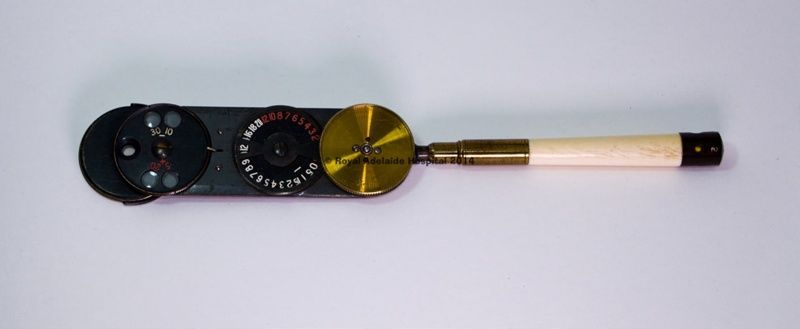The Ophthalmoscope, Seeing into the Eye

Blog vol 5.31. The Ophthalmoscope, Seeing into the Eye
“We stand on the shoulders of giants”.
You have probably run across that phrase at some point, quoted from Sir Isaac Newton. He was corresponding with another brilliant scholar, Robert Hooke, about the work of their predecessors, like Descartes (and others) in the development of mathematical theorem. This does not grow old, we too have benefitted from the work of these same people and many who have come after. Those of us who look into human eyes for a living owe a debt of gratitude particularly to Hermann von Helmholtz and his invention of the ophthalmoscope.
In 1851, at the age of 29, he developed his Augenspiegel (eye mirror), and started using the first working model in 1854. Prior to that, it was very difficult to see into the eye to detect and treat eye disease. I will always remember the episode in Little House on the Prairie (1970s), where the Ingalls’ oldest daughter, Mary, contracts scarlet fever which results in her going blind. Her visit to the ophthalmologist I will always remember: he took a candle and reflected the light into Mary’s eye to get a look at her optic nerves. He was holding one of the earliest versions of the ophthalmoscope.
Last year, my predecessor, Dr. Ronald Watson, gave me a 1930s cabinet for examining eyes, on which I wrote a dedicated a blog. At that time, he also gave me an ophthalmoscope that was made in the late 1800’s in New York State, which will be one of the many pieces of our soon-to-be museum of optics and eyewear at Burlington Eyecare.
Von Helmholtz wrote many papers on the optics and theory of this instrument and came to realize that three essential elements were required for its design.
1. A source of illumination, thus the candle was used at that time.
2. A method of reflecting light into the eye from the source.
3. An optical means of correcting an unsharp image of the retinal fundus.
These three elements are still essential for today. The unit that I have was the next step in development from von Helmholtz’s original. This unit features a concave mirror with a central hole drilled out to focus the light into the eye in line with the sight of the observer. It also had a rotary wheel of different powered lenses that can sharpen the image of the fundus. Pretty genius.
The greatest improvement in the design came when an incandescent bulb was used as a light source as it stabilized the light. Today we have halogen or LED sources for light, and the energy is supplied by a lithium battery instead of a plug-in unit. Yet the elements remain the same: light and lenses, and all of it lined up for the doctor to see straight onto the visual axis of the patient.
It is only fitting that the Father of Modern Optics, Sir Isaac Newton, would be the one to stand on others shoulders. We benefit greatly from the work of all these people who together brought us such wonderful technology.
A hearty thank you for the ophthalmoscope,
The good doctor






